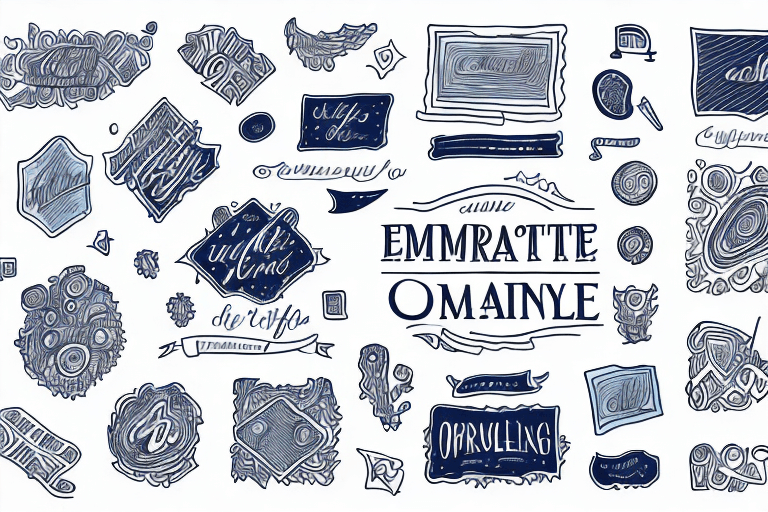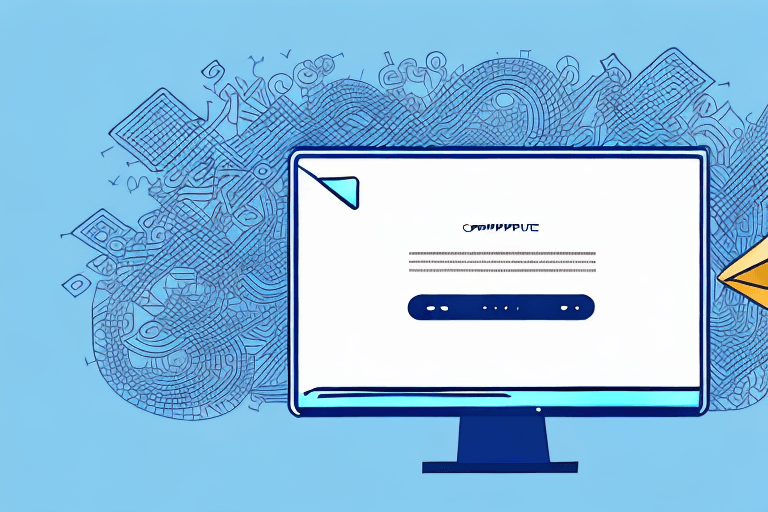In today's digital age, email has become an essential tool for communication. We send emails for work, personal messages, and everything in between. One element of email communication that often goes overlooked is the email signature. An email signature is an opportunity to convey professionalism and branding. It's important to pay attention to the font used in your email signature because it can have a significant impact on how your message is received.
Understanding the Importance of Email Signature Fonts
First impressions matter, and your email signature is often the first point of contact with new clients, colleagues, and potential employers. Fonts play a crucial role in shaping these first impressions. It's essential to choose a font that enhances readability, looks professional, and accurately reflects your brand voice.
First Impressions Matter
Your email signature is like a business card. It's a reflection of your company or personal brand. An email signature that is well-designed and uses the right fonts shows that you're professional, organized, and serious about your work.
Think about it: when you receive an email from someone, the first thing you notice is their email signature. A poorly designed signature can leave a bad impression, making the recipient less likely to take you seriously or want to do business with you. On the other hand, a well-designed signature can make a great first impression, setting the tone for a positive and productive interaction.
Enhancing Readability and Professionalism
The right font not only enhances your email signature's appearance but also makes it easier to read. A font that is too small or too difficult to read can give the impression that you're disorganized or not serious about your work. A font that is easy on the eyes and easy to read will help ensure your message is received in the intended manner.
When choosing a font for your email signature, consider the size and spacing of the letters. A font that is too small or too cramped can be difficult to read, especially on a mobile device. On the other hand, a font that is too large or too spaced out can look unprofessional. Look for a font that strikes a balance between readability and professionalism.
Consistency Across Devices and Platforms
Your email signature should be consistent across all devices and platforms. This means choosing a font that looks great on desktop and mobile devices alike. Using a font that is not universally available could result in your email signature appearing differently depending on the device or platform used to view it.
When choosing a font, consider its availability across different platforms. For example, some fonts may not be available on mobile devices or may appear differently on different operating systems. Choosing a font that is widely available and looks great on all devices will help ensure your email signature looks professional and consistent, no matter where it's viewed.
In conclusion, choosing the right font for your email signature is essential to making a great first impression, enhancing readability and professionalism, and ensuring consistency across devices and platforms. Take the time to choose a font that accurately reflects your brand voice and makes your email signature stand out in the best possible way.
Popular Font Categories for Email Signatures
When it comes to email signatures, choosing the right font can make all the difference. A font can convey a message, set a tone, and even affect the readability of your message. There are four main categories of fonts that you can choose from: Serif, Sans Serif, Script, and Monospace. Each of these categories has its own unique characteristics and can be used to achieve different effects.
Serif Fonts
Serif fonts are often perceived as traditional and professional. They've been used for centuries in print media, making them a popular choice for email signatures as well. The small lines or flourishes at the end of each letter make them easy to read, even in smaller sizes. Times New Roman and Georgia are two popular serif fonts that work well in email signatures.
When using a serif font, it's important to keep in mind the overall tone of your email signature. If you're going for a classic and sophisticated look, a serif font can help achieve that effect. However, if you're trying to convey a more modern and casual tone, a serif font may not be the best choice.
Sans Serif Fonts
Sans Serif fonts are trendy, modern, and easy to read. They don't have the small lines or flourishes at the end of each letter, which gives them a clean and minimalist look. Popular Sans Serif fonts for email signatures include Arial and Helvetica.
If you're looking to create a signature with a contemporary and sleek feel, a Sans Serif font can be a great choice. They work well with bold colors and can be used to create a sense of energy and excitement.
Script Fonts
Script fonts are cursive in style and mimic the look of handwriting. While they can look elegant and sophisticated, they can be difficult to read in smaller sizes. Script fonts are best used sparingly in email signatures for logo or name text.
If you're looking to add a personal touch to your email signature, a script font can be a great choice. They work well for adding a signature or a personalized message. However, it's important to keep in mind that they can be difficult to read in smaller sizes, so it's best to use them sparingly.
Monospace Fonts
Monospace fonts have equal spacing between all letters and have a clean, modern feel. They're often used in coding and programming, but certain Monospace fonts, such as Courier New, can work well in email signature designs too.
If you're looking to create a signature with a modern and minimalist feel, a Monospace font can be a great choice. They work well with bold colors and can be used to create a sense of simplicity and clarity.
Overall, when choosing a font for your email signature, it's important to keep in mind the tone and style you're trying to convey. Whether you're going for a classic and sophisticated look, or a modern and minimalist feel, there's a font out there that can help you achieve your desired effect.
When it comes to selecting the right font for your email signature, there are several factors to consider. First and foremost, you want to choose a font that is easy to read and professional-looking. This will help ensure that your message is taken seriously and that your brand is represented in the best possible light.In addition to readability and professionalism, you may also want to consider the style and tone of your email signature. For example, if you are a creative professional, you may want to choose a font that is more playful or artistic. On the other hand, if you work in a more traditional industry, you may want to stick with a classic, timeless font.Another important factor to consider is how your font will look on different devices. With so many people accessing their emails on mobile devices, it's important to choose a font that is easy to read on smaller screens. This is where Sans Serif fonts like Arial, Helvetica, and Calibri can be particularly helpful.Of course, there are also plenty of Serif fonts that work well in email signatures. Times New Roman and Georgia are both classic choices that convey a sense of tradition and elegance. These fonts can be a great choice if you are looking to create a more formal or professional impression.Ultimately, the font you choose for your email signature should reflect your personal style and brand identity. By taking the time to carefully consider your options and select a font that works well on all devices, you can create an email signature that is both functional and aesthetically pleasing.




